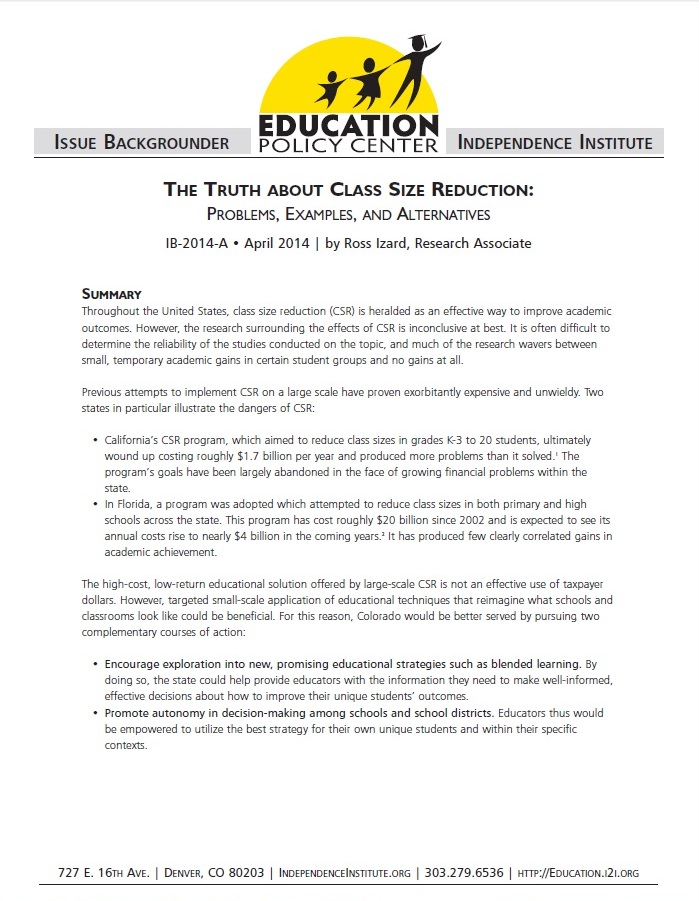IB-2014-A (April 2014)
Author: Ross Izard
PDF of full Issue Backgrounder
Scribd version of full Issue Backgrounder
Summary
Throughout the United States, class size reduction (CSR) is heralded as an effective way to improve academic outcomes. However, the research surrounding the effects of CSR is inconclusive at best. It is often difficult to determine the reliability of the studies conducted on the topic, and much of the research wavers between small, temporary academic gains in certain student groups and no gains at all.
Previous attempts to implement CSR on a large scale have proven exorbitantly expensive and unwieldy. Two states in particular illustrate the dangers of CSR:
- California’s CSR program, which aimed to reduce class sizes in grades K-3 to 20 students, ultimately wound up costing roughly $1.7 billion per year and produced more problems than it solved. The program’s goals have been largely abandoned in the face of growing financial problems within the state.
- In Florida, a program was adopted which attempted to reduce class sizes in both primary and high schools across the state. This program has cost roughly $20 billion since 2002 and is expected to see its annual costs rise to nearly $4 billion in the coming years. It has produced few clearly correlated gains in academic achievement.
The high-cost, low-return educational solution offered by large-scale CSR is not an effective use of taxpayer dollars. However, targeted small-scale application of educational techniques that reimagine what schools and classrooms look like could be beneficial. For this reason, Colorado would be better served by pursuing two complementary courses of action:
- Encourage exploration into new, promising educational strategies such as blended learning. By doing so, the state could help provide educators with the information they need to make well-informed, effective decisions about how to improve their unique students’ outcomes.
- Promote autonomy in decision-making among schools and school districts. Educators thus would be empowered to utilize the best strategy for their own unique students and within their specific contexts.









